What are butterfly valves?
A butterfly valve is a fitting that opens or closes the flow of media through a 90° rotational movement. It is compact and simply constructed, leading to cost advantages. Its use is mainly for opening/closing operation, and it is conditionally suitable for throttling.
Areas of application / Housing forms / Designs / Seals
Butterfly valves generally consist of a compact housing, the valve disc for shutting off or allowing the flow, a shaft (with bearings and seals), and the actuating element. The valve disc is opened or closed by a 90° rotary motion via the actuating element. When fully opened, the valve disc is parallel to the flow direction, in the media flow.
The classic area of application for the butterfly valves:
Butterfly valves are typically used as pure shut-off fittings for open/close operation. Since the disc is also in the flow path even when fully open, their use for media containing solids is not recommended. A full, free passage is therefore not provided. This makes it impossible to clean the pipeline using, for example, pigs.
Butterfly valves can also be conditionally used for throttling or regulating the flow medium, although they have the following disadvantage due to their design. The further the disc is closed, the more the flow velocity in the passage increases. This leads to cavitation and water turbulence, which can damage the internal components, particularly the gaskets.
The installation position of the butterfly valve is variable, provided the valve shaft is horizontal.
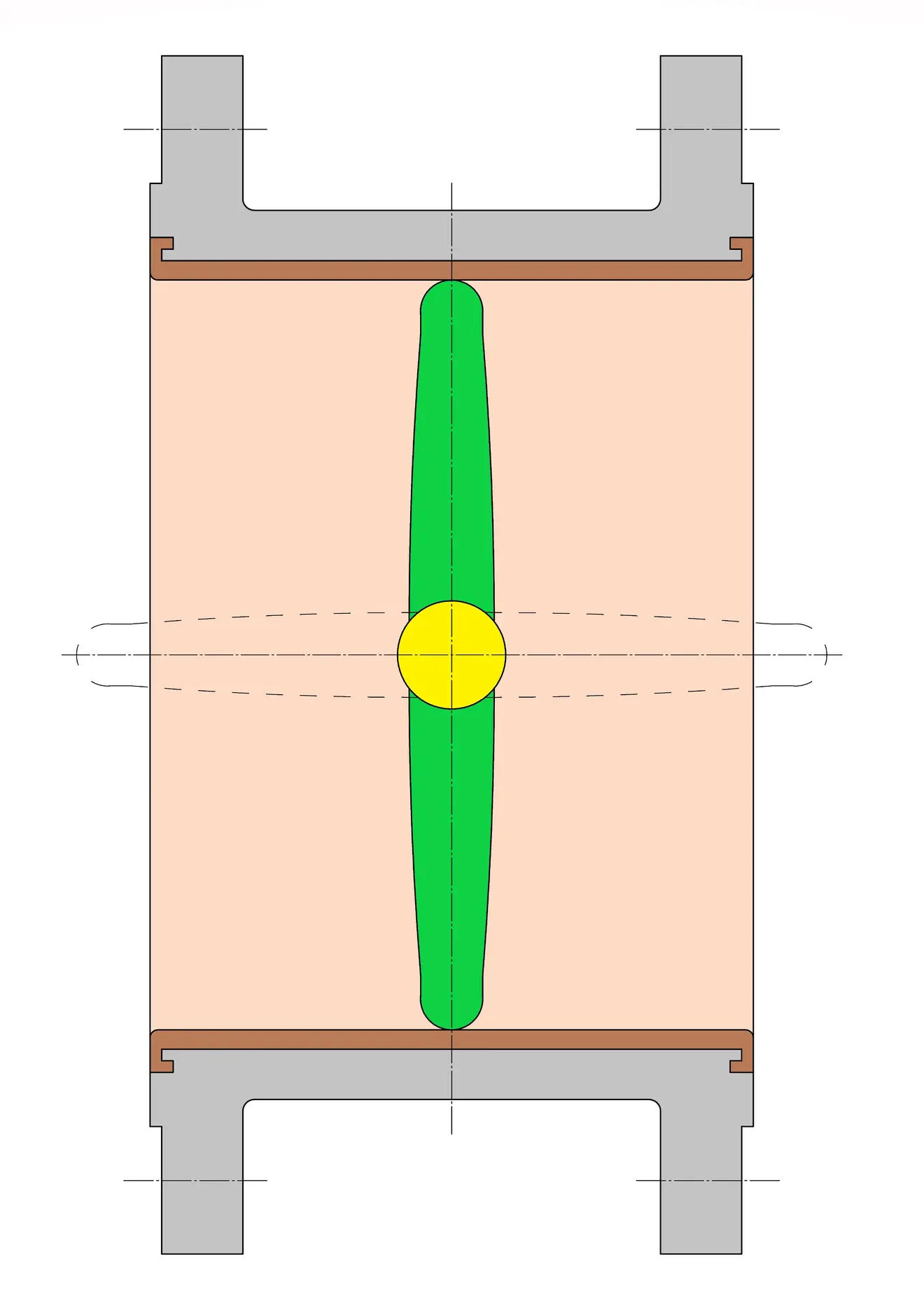
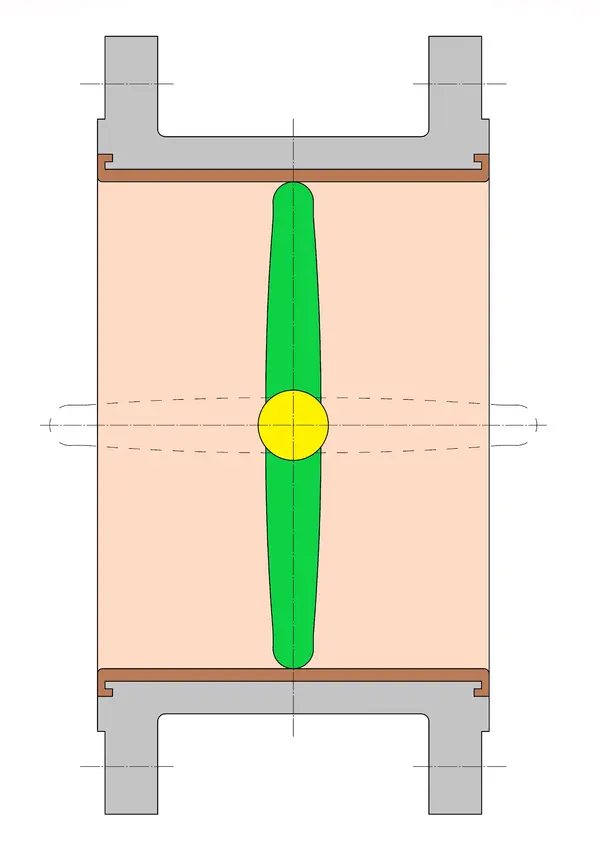
Butterfly valve, centric
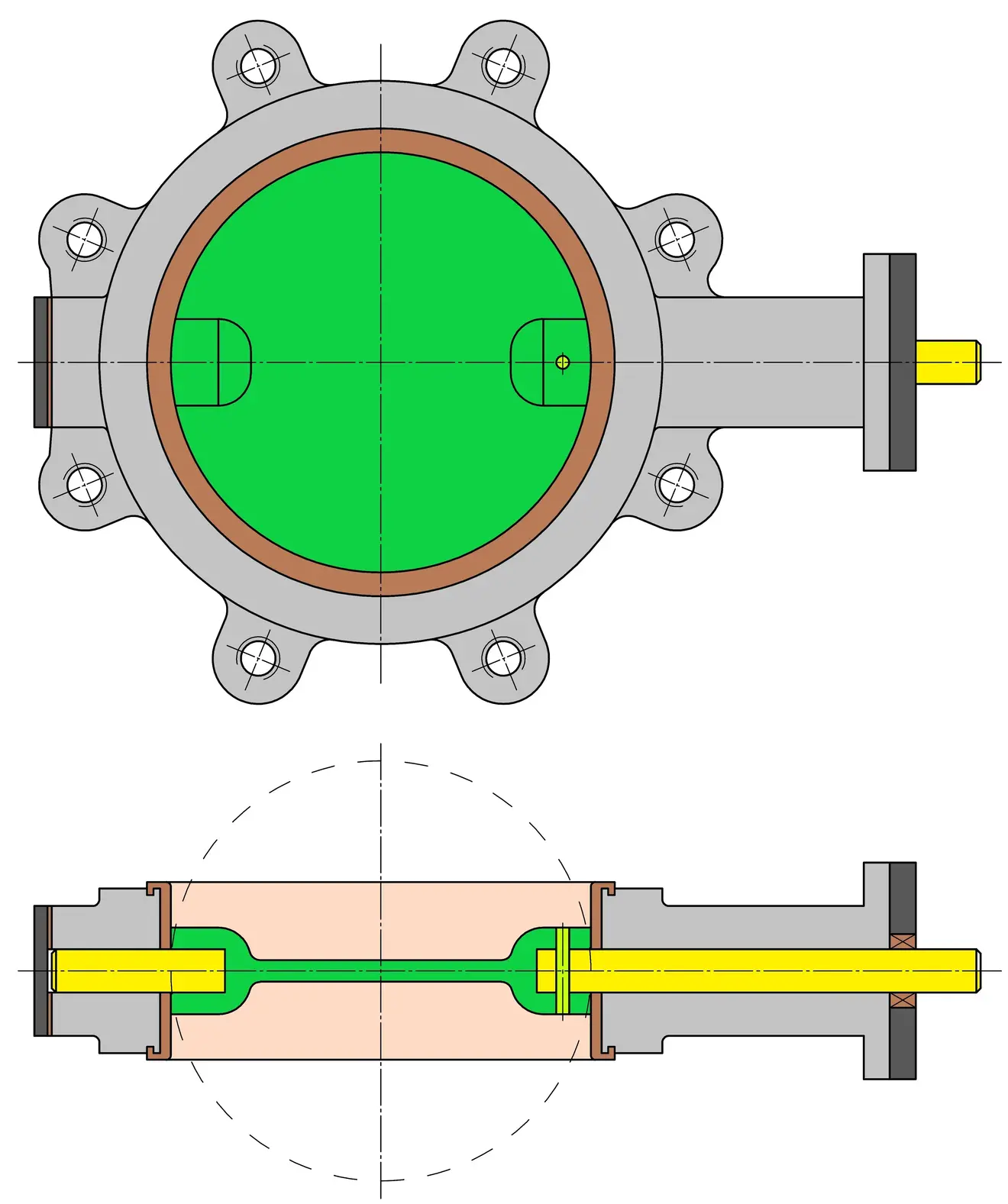

Butterfly valve with threaded eyes
The operation is manual via a hand lever or, for larger nominal sizes, via a gearbox with a hand wheel. Automated shut-off valves can be operated via electric drives, pneumatic, or hydraulic drives.
The advantages of butterfly valves over valves, gate valves, and ball valves lie in their simple construction and compact dimensions. They require less material, have a lower weight, and need less space during installation, resulting in significant cost savings. They are very versatile and have a very short operating time due to the 90° rotation.
A disadvantage is the design-related arrangement of the valve disc, which is located in the flow path. Therefore, they are rather unsuitable for media containing solids, and the pipeline is not able to be pigged. Due to the flow resistance of the valve disc in the fully open state and the increased flow velocity when closing, damage may occur internally, negatively affecting the sealing properties.
Classification of butterfly valves based on the following features:
Housing shape: Intermediate flange, flange-mounted, or flange design
Design: centric or eccentric butterfly valves
Sealing type: soft-sealing or metal-sealing
Housing shapes
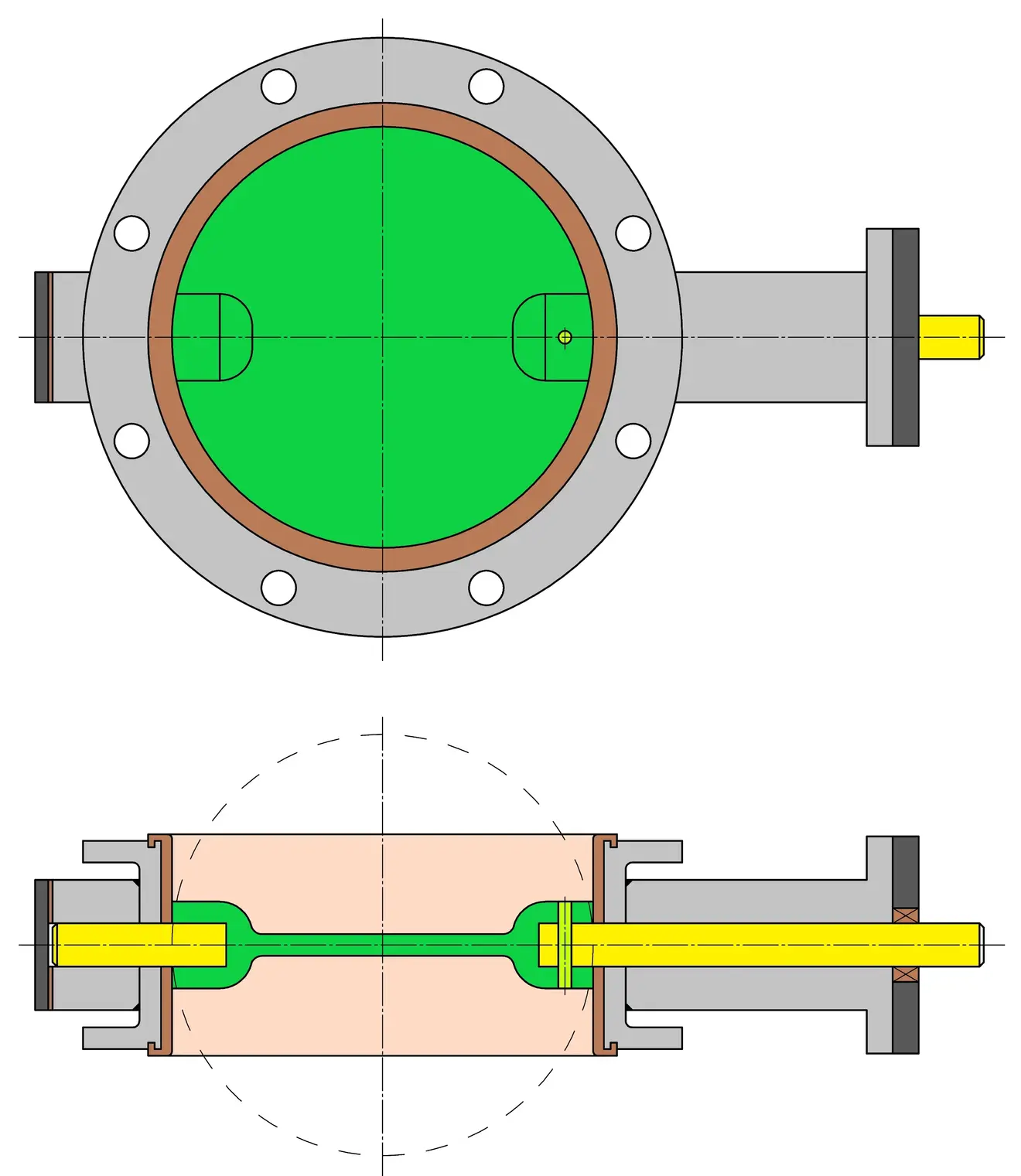
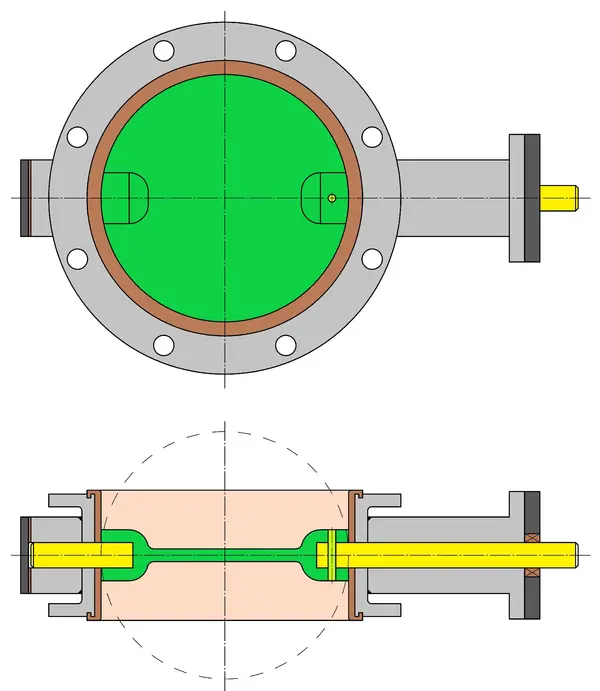
Butterfly valve, intermediate flange design,
centrally, soft-sealing
Intermediate flange design
(English: Wafer Type)
Butterfly valves in intermediate flange design consist only of a ring-shaped housing with the integrated flap disc, the sealing element, the shaft with bearings/seals, and the structure for the actuation element. They are simply clamped between two pipeline flanges, which is why they are also referred to as clamp fittings. The housing usually has four centering eyes through which the valve can be fixed in the desired installation position between the flanges.
Due to their light and simple construction, the material usage is very low, making them the most cost-effective butterfly valves.
Flange Version
(English: Lug Type)
In this design, the housing is equipped with integrated threaded holes (also referred to as threaded eyes), allowing the flap to be directly screwed to the counterpart flanges. This has the advantage that the pipeline can be disassembled from one side: the flap can be used as a so-called end fitting.


Butterfly valve, flange-mounted version,
central, soft-sealing
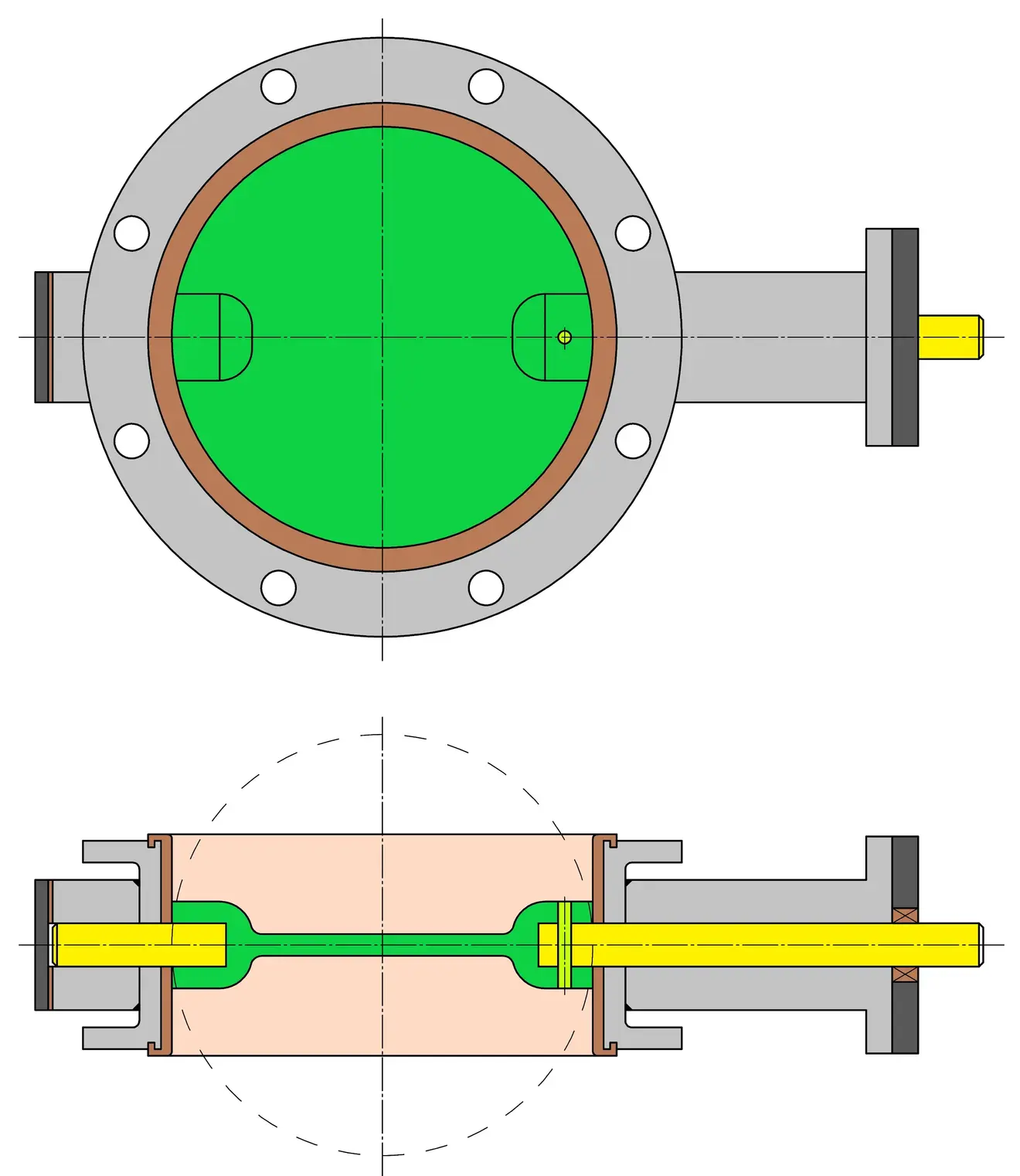
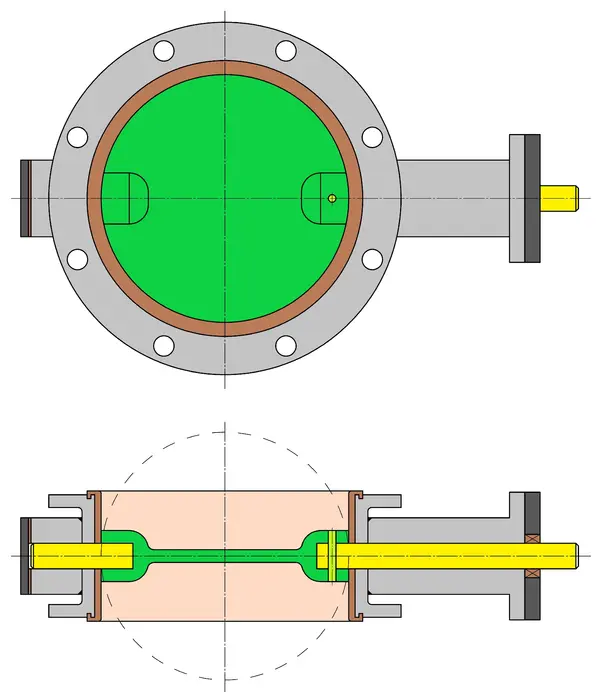
Butterfly valve, double flange design,
centered, soft sealing
Double Flange Butterfly Valves
The valve housing is equipped on both sides with an integrated U-profile flange, providing the advantage of a short Total length and the associated savings in material, weight, and production costs.
Flange Shut-off Valves
Flange shut-off valves have a flange connection on both sides and have been developed as a cost-effective alternative to wedge gate valves. They have the same short total length according to EN 558-1 basic series 14, but are more cost-effective to manufacture and significantly easier to install due to their compact design and reduced material usage. The larger the nominal size, the more noticeable the price difference becomes.
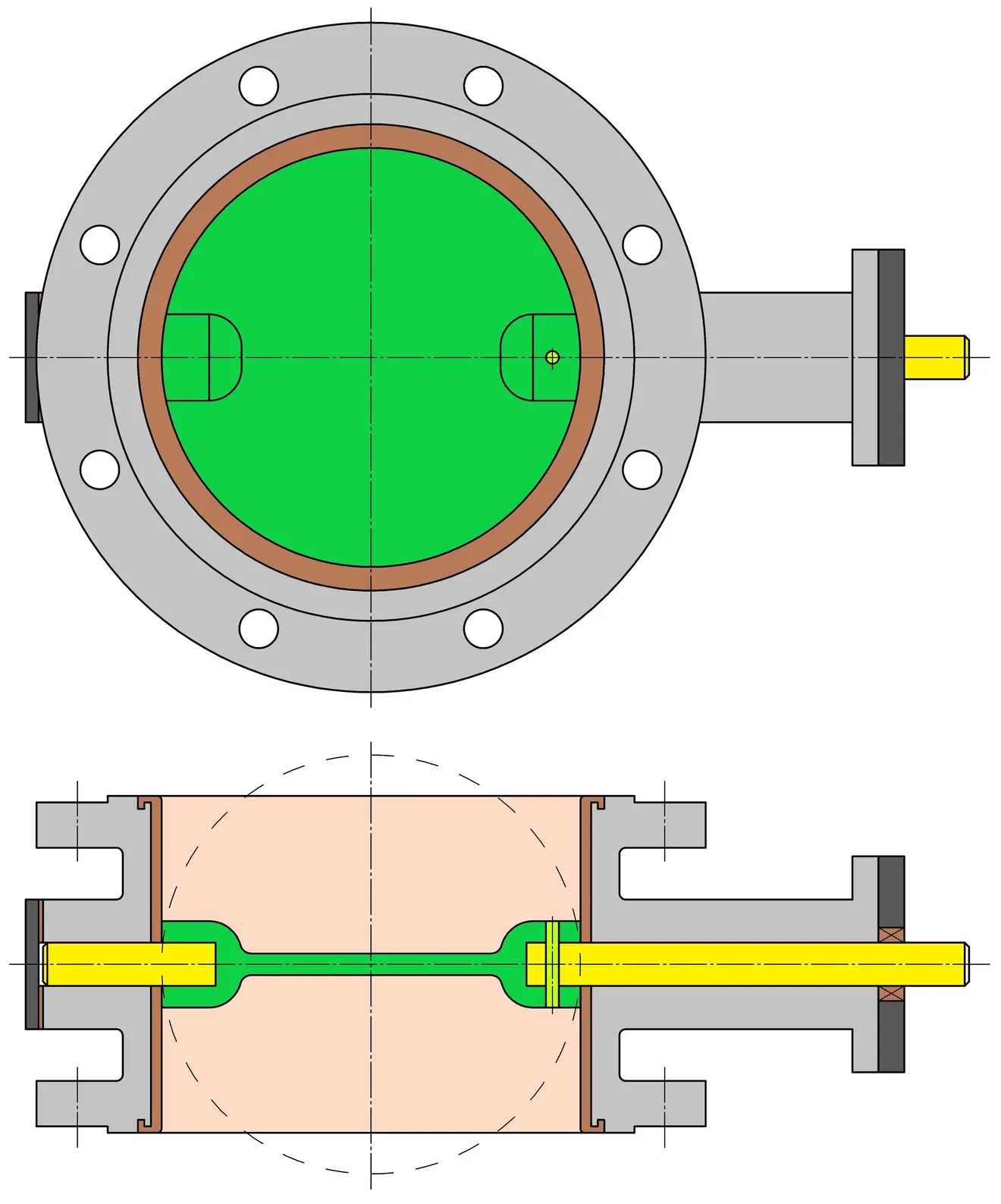
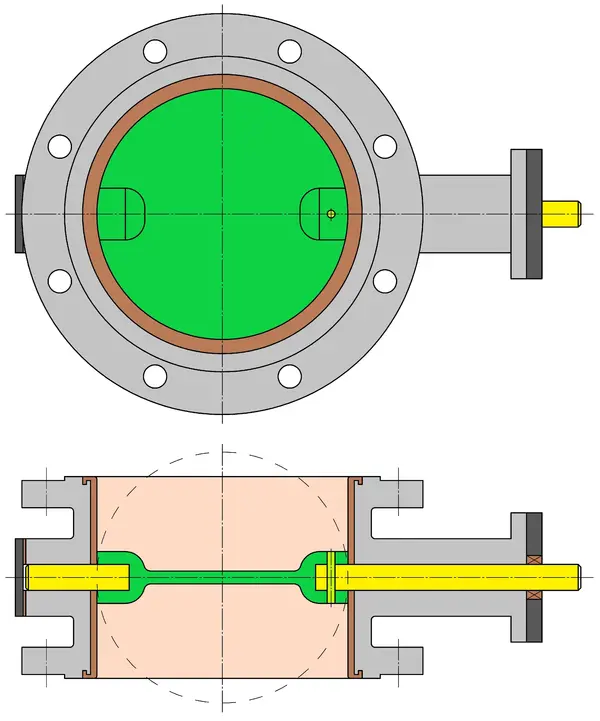
Butterfly valve, flange design,
centered, soft sealing
Designs


Butterfly valve,
centrally, soft sealing
Central Butterfly Valves
They are the "original type" of flange shut-off valves and still today the most commonly used valve design. They are typically soft-sealing and bi-directional, sealing on both sides. In the closed position, the valve disc "sits" in the surrounding bellows, sealing off with the cuff.
Central means that the valve disc is rotated 90° around its own axis to open or close. The shaft is located in the middle of the valve disc, so the pivot point is in the center of the valve seat and thus in the center of the pipeline.
Excentric shut-off valves (single, double, and triple eccentric)
In a single eccentric butterfly valve, the pivot point of the flap disc is slightly shifted from the seat plane along the pipe axis (1). This reduces the operating forces of the shut-off valve and the wear.
Double eccentric means that additionally the pivot point (2) of the flap disc no longer sits in the center of the pipe. This design offers the following advantages:
The actuation moments are lower than with concentric valves, which is particularly noticeable with larger nominal sizes and higher working pressures.
The flow approach is significantly more favorable than with closing bodies that stand perpendicular to the pipeline, which reduces wear.
The stress on the sealing elements is reduced, which also decreases wear and reduces maintenance effort.
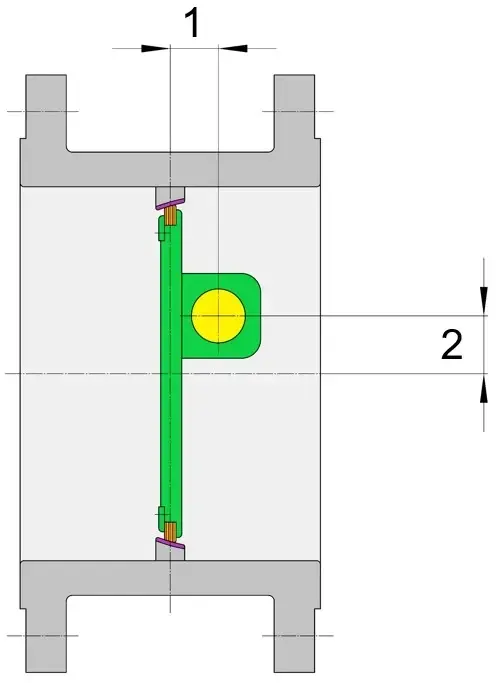
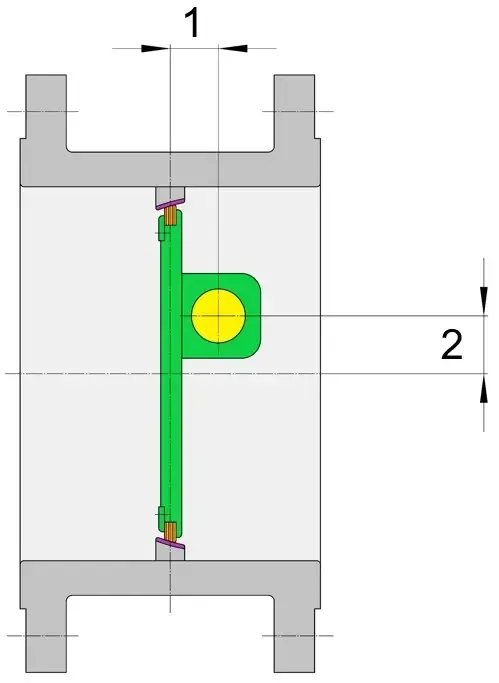
Double eccentric butterfly valve
Triple eccentric is a butterfly valve when the rotation axis of the seat (3) is neither parallel nor symmetrical to the pipeline axis. This means in detail:
Eccentricity 1: The valve shaft is located behind the seat plane.
Eccentricity 2: The valve shaft is offset to one side from the center axis of the pipeline.
Eccentricity 3: It is achieved by a tilted, conical profile of the seat. This causes contact between the sealing surfaces of the flap disk and the housing to occur only at the last moment.
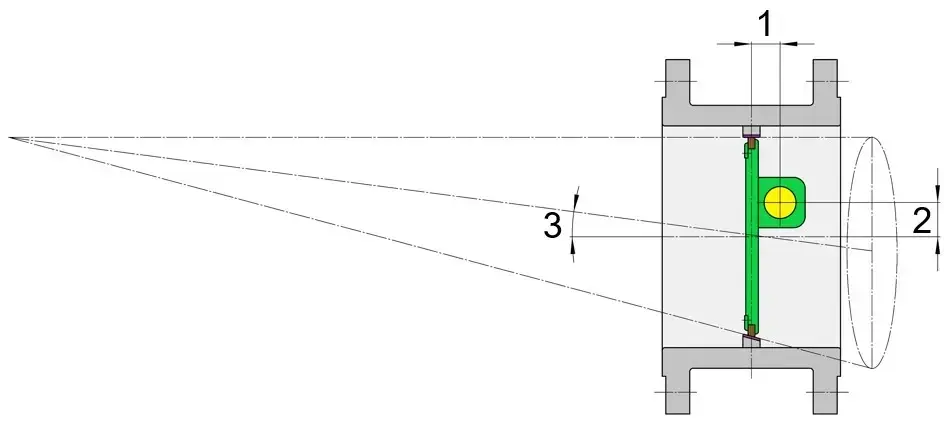
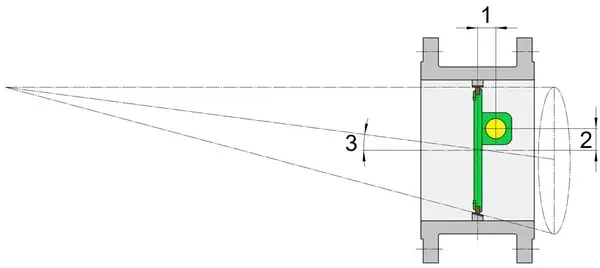
Triple-Eccentric Butterfly Valve
This triple eccentricity ensures that the 90° rotation of the flap disc for opening or closing the fitting occurs almost frictionlessly and prevents the disc from jamming. The actuation forces and wear are significantly minimized, extending the service life manifold.
Bidirectional flow through the Butterfly valve is possible, where the medium, depending on the flow direction, either assists in the opening or closing of the flap disc.
Another advantage is the nearly leakage-free sealing achieved with triple eccentric Butterfly valves. This makes vacuum applications possible or use in high working pressures, high, or very low working temperatures. They can even be used under extreme temperature fluctuations and pressure spikes.
Types of Gaskets
Soft-sealing Butterfly Valves
The classic Butterfly valves are soft-sealing and suitable for low to medium working pressures up to 16 bar. Depending on the sealing material, they are suitable for working temperatures up to a maximum of +200 °C. They are manufactured from nominal size DN 25 to over DN 2000.
The sealing element, the sleeve, is vulcanized as a housing lining in very inexpensive models and cannot be replaced in case of damage and/or wear. Most manufacturers nowadays offer the sleeve as a maintenance-friendly spare part for replacement.
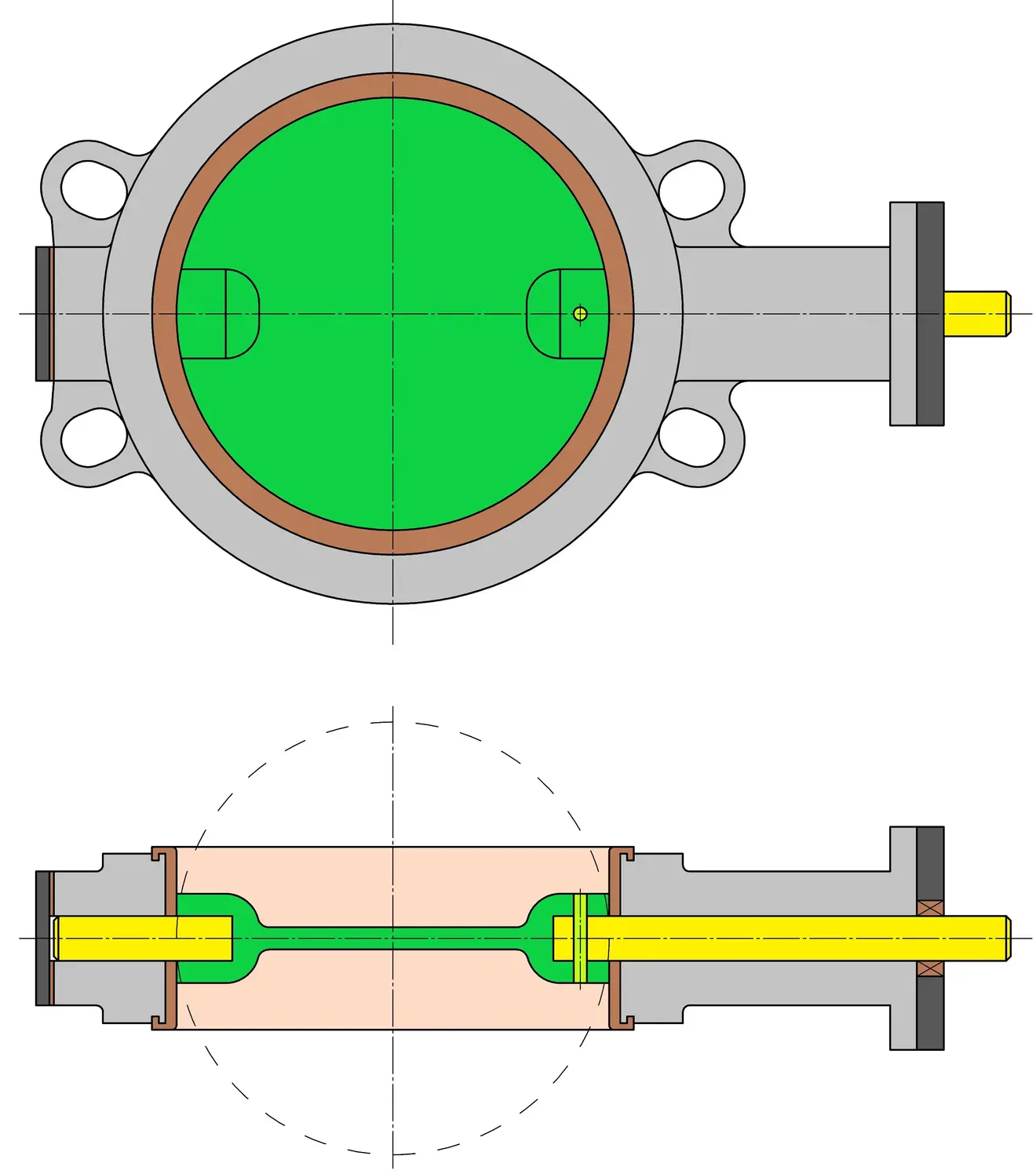
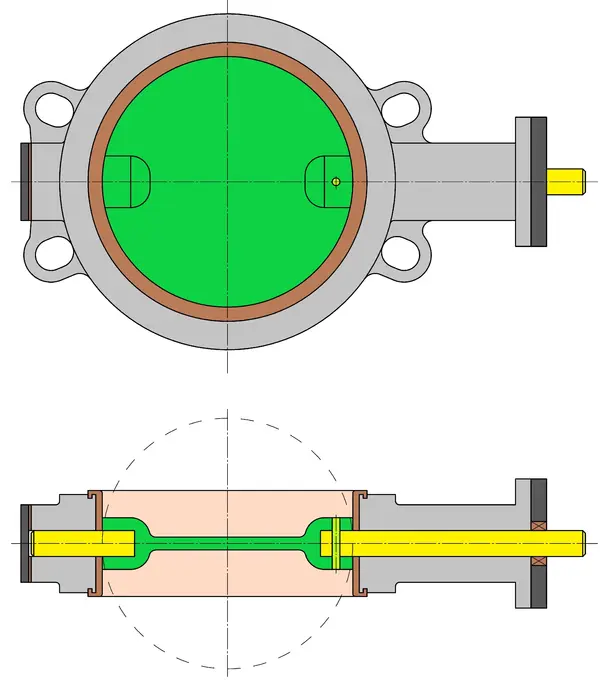
Butterfly valve, soft sealing
Commercial sealing materials are:
-
NBR (Nitrile Butadiene Rubber): good resistance to mineral oils, fats, water, gases, hydrocarbons, or oils. Temperature range: -10 °C to +80 °C
-
EPDM (Ethylene-Propylene-Diene-Monomer): good resistance to heat, drinking/hot water, or chemicals. Temperature range: -10 °C to +130 °C
-
FKM / FPM (Fluoroelastomer) (Viton®): high thermal and chemical resistance, suitable for oils, chemicals, or other media. Temperature range: 0 °C to +150 °C
-
PTFE (Polytetrafluoroethylene) (Teflon®): good resistance to chemicals, aggressive and corrosive media, acids, chlorine, etc. Temperature range: -30 °C to +200 °C
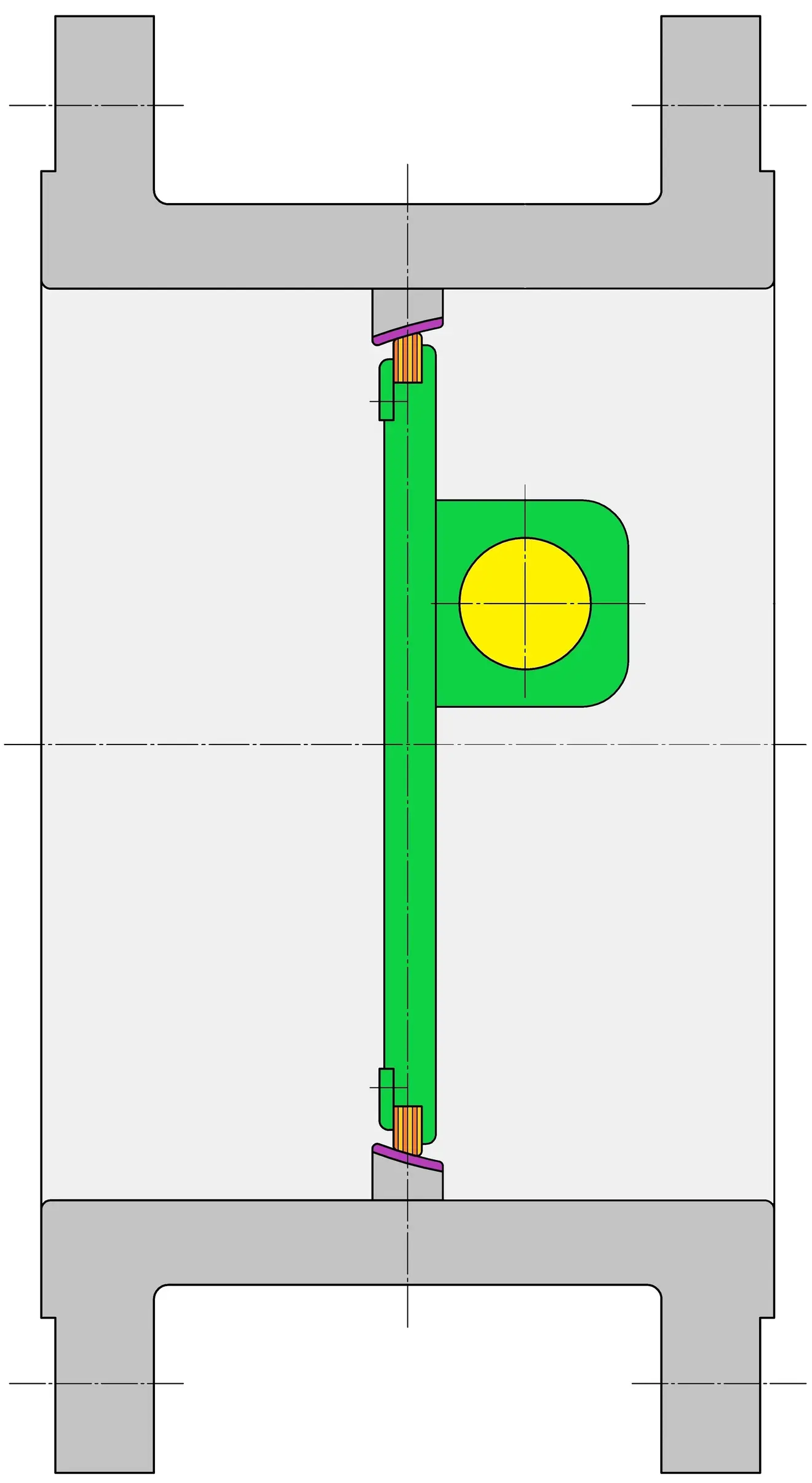
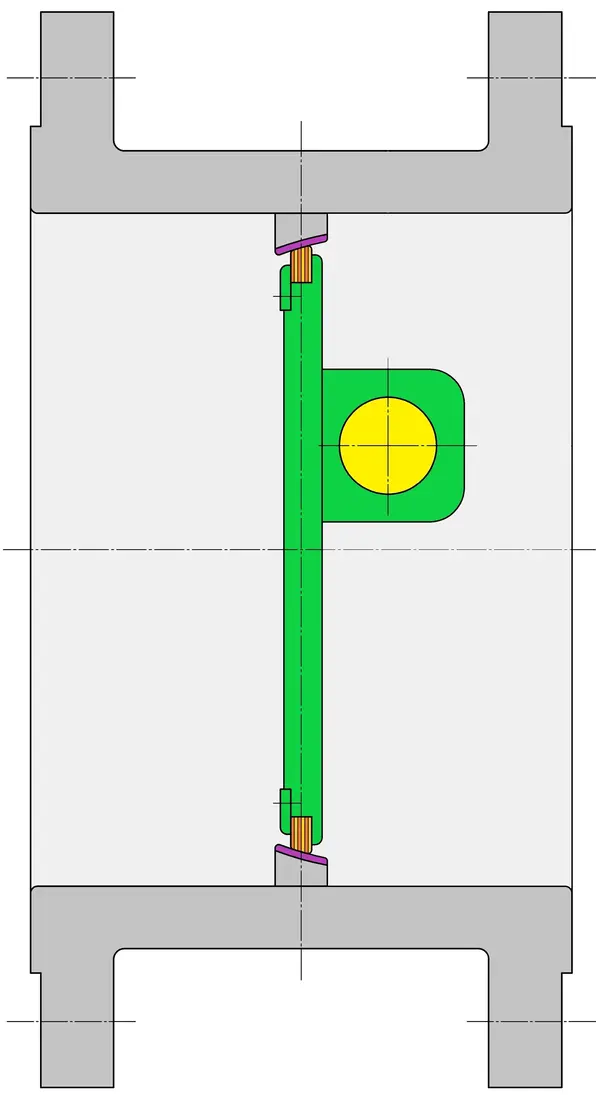
Butterfly valve, metal sealing
Metallic sealing shut-off valves
These shut-off valves are manufactured up to a nominal size of DN 2000 and are suitable for working pressures up to 200 bar. They are very well suited for extreme temperature conditions. Depending on the material combination, they can be used for high-temperature applications from -200 °C to +1100 °C.


Would you like personal advice?
Direct Contact
If you have questions about our products or services, or if you would like personal advice on a specific concern, please do not hesitate to contact us directly! Our experts are here for you and look forward to assisting you.